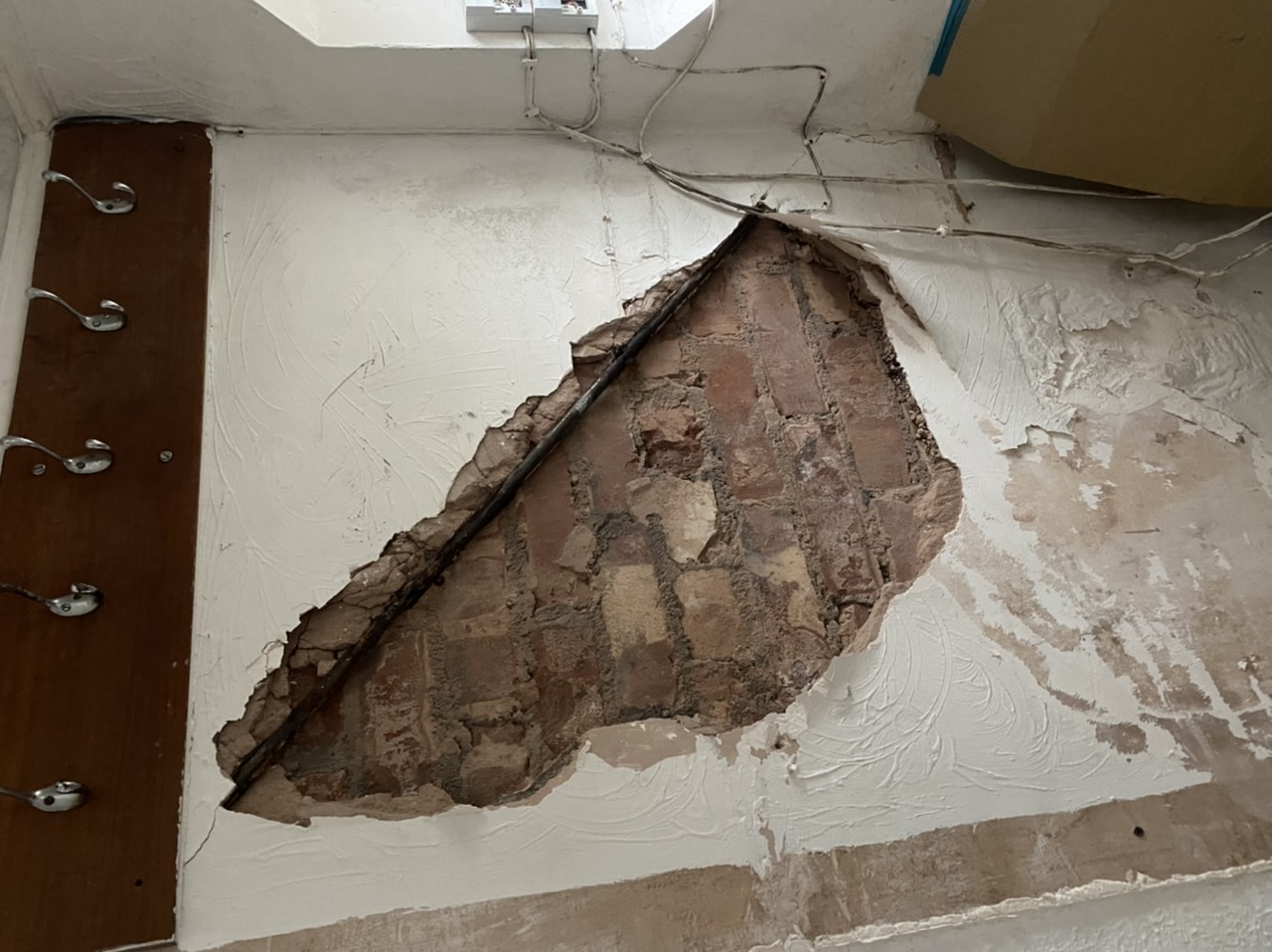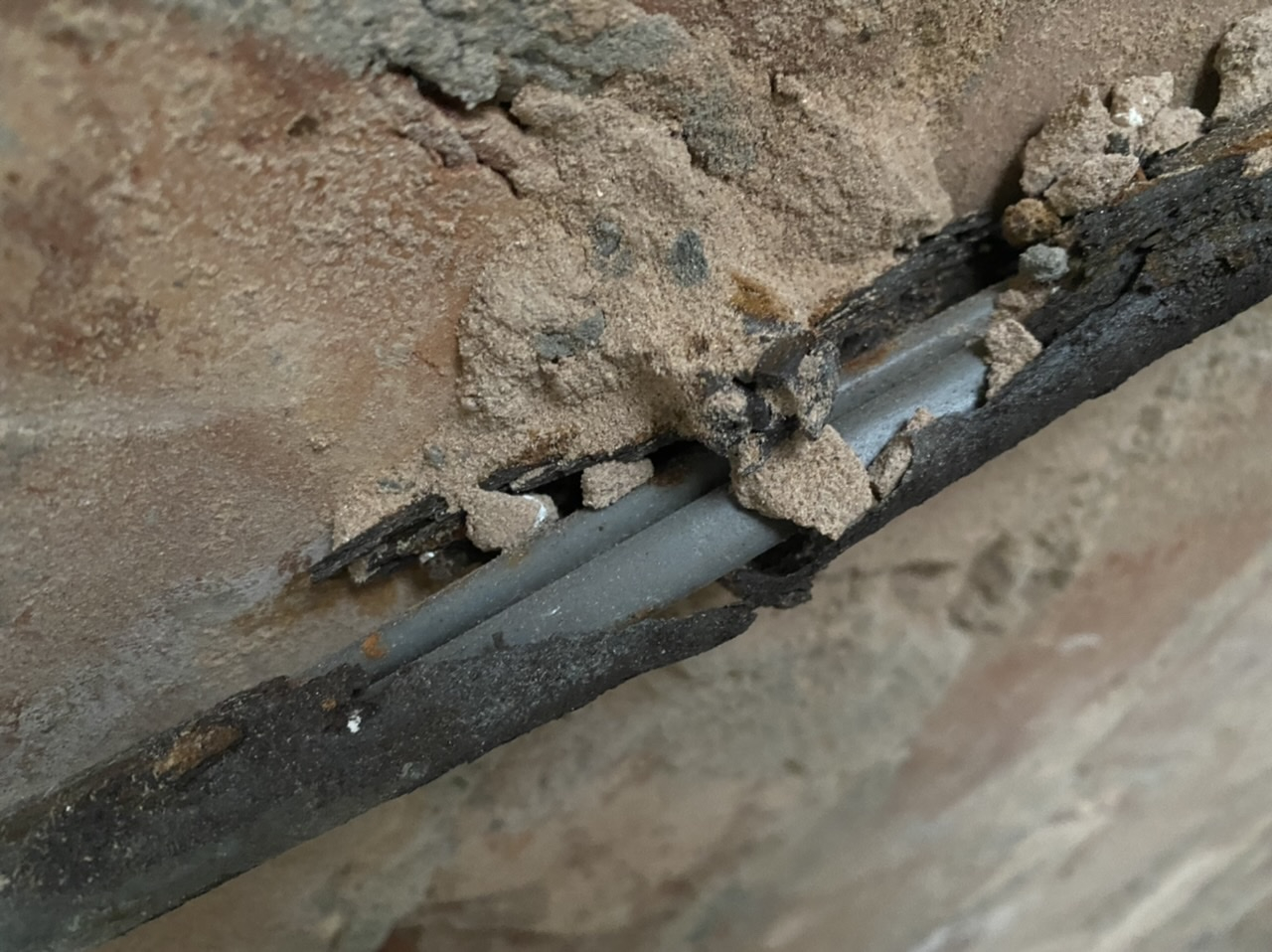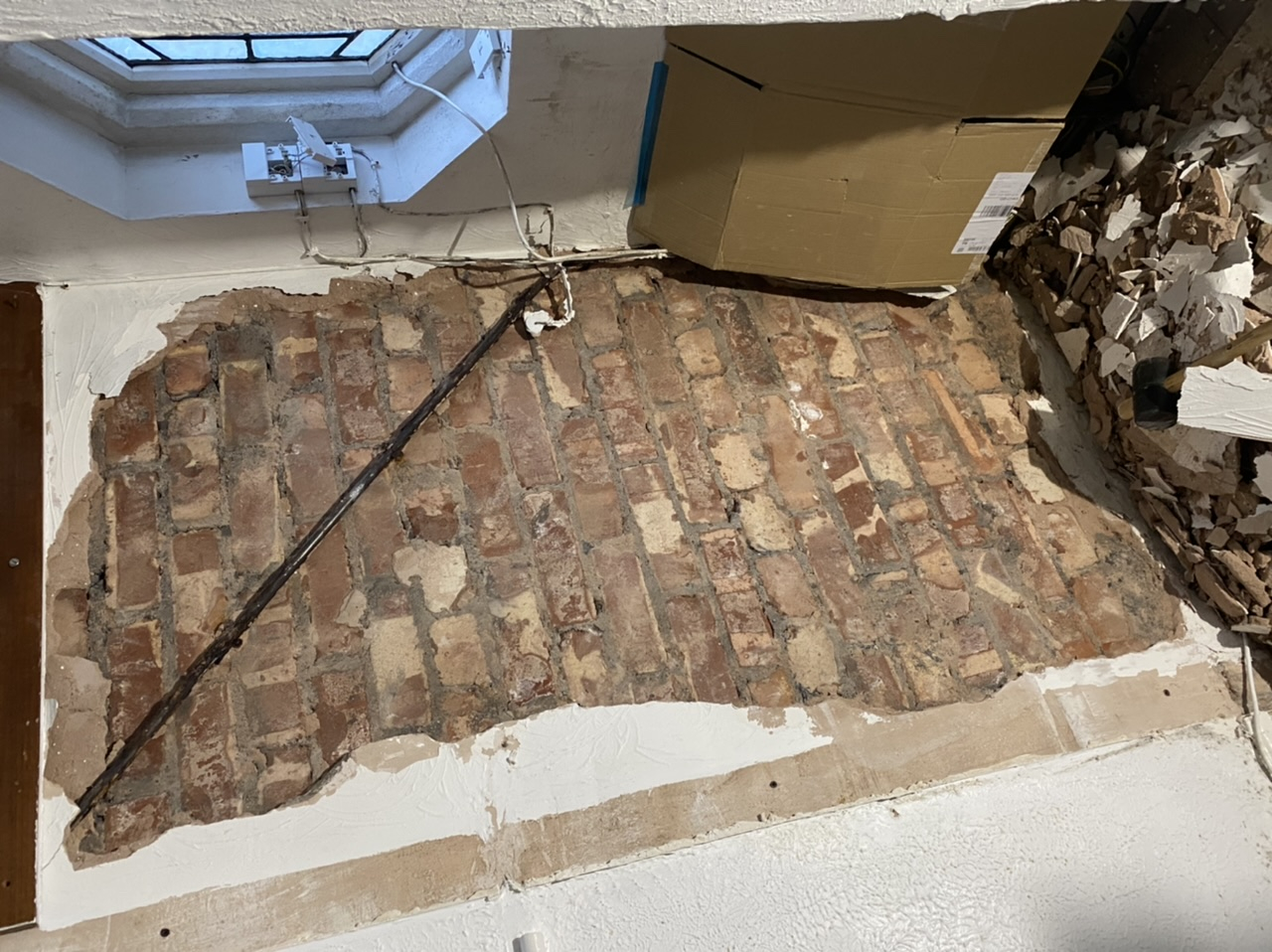We'd like to remind Forumites to please avoid political debate on the Forum... Read More »
📨 Have you signed up to the Forum's new Email Digest yet? Get a selection of trending threads sent straight to your inbox daily, weekly or monthly!
Knocked old plaster off to find this. What to be done?
Options
Ben1989
Posts: 470 Forumite




I knocked some mouldy plaster off the wall to brick this weekend.
I was greeted by a diagonal conduit with wires in it.
Can anyone say whether it’s likely to be old? Also, it’s due to be plastered tomorrow so what precautions or advice should the plasterer take?
Quite sick of seeing just what seems like bodge jobs in the house.
many thanks



I was greeted by a diagonal conduit with wires in it.
Can anyone say whether it’s likely to be old? Also, it’s due to be plastered tomorrow so what precautions or advice should the plasterer take?
Quite sick of seeing just what seems like bodge jobs in the house.
many thanks



0
Comments
-
Ben1989 said:I knocked some mouldy plaster off the wall to brick this weekend.
I was greeted by a diagonal conduit with wires in it.
Can anyone say whether it’s likely to be old? Also, it’s due to be plastered tomorrow so what precautions or advice should the plasterer take?Do you know how old the cables are, and if they are live ?A single core cable with a cloth or rubber insulation will most likely be from when the house was first wired. Well past the sell by date and will (hopefully) been replaced/bypassed by modern PVC coated cables. If, and only if this is the case (old & disused), I'd suggest ripping the conduit out.If the cables are live, then get an electrician in to re-route them and fit conduit. Current wiring regs say that buried cables should only run horizontally or vertically in proscribed "safe zones" - That has been the case for quite a long time now, so not just a recent thing.Her courage will change the world.
Treasure the moments that you have. Savour them for as long as you can for they will never come back again.1 -
Regulations covering wiring zones have been around for some time so it's old but possibly still live. Difficult to get the scale of the thickness of those cables from the photos but if they are round then they could be the mains coming into the house unless you can see them coming in elsewhere.
Anyway. regardless of all that I'd be tempted to phone your plasterer and see whether he can swap his jobs around and come to you later in the week then get and electrician to check it and advise. Lets say you leave the cable there then someone decides to put a lower coat rail in or something else then they might drill straight through those cables.
edit: I was typing this as freebear posted so he'd covered it alreadySorry I can't think of anything profound, clever or witty to write here.0 -
To me it looks like relatively modern PVC cables inside steel conduit - sometimes when re-wiring it is still physically possible to pull cables through the old conduit, and that saves chasing out walls. So this is a possibility.Ben1989 said:
Can anyone say whether it’s likely to be old? Also, it’s due to be plastered tomorrow so what precautions or advice should the plasterer take?
I'd say you need to get an electrician in - which may require putting off the plasterer.
You need to find out what the cables do, and whether they are still in use, and as FreeBear says, if so they need to be rerouted.
The condition of the conduit is also pretty poor. I'd want to investigate why it has corroded so badly - for example whether there is damp getting into the wall.
Also, steel expands when it rusts, so there is a risk that if you leave the conduit in-situ it will (sooner or later) start causing your new plaster to crack and/or debond from the wall.
0 -
Yes to me it looks like fairly new twin and earth.
What tests would the electrician do to confirm whether it is live or not? Is there an unobtrusive check?
Also, if he were to remove the rusted conduit, what could he replace it with? Which route would he then take upwards?
My plasterer is doing the hall, stairs and landing (three days) so I could ask him to just leave that section until a later date. Electrician is already due around ours on 7th December for an upstairs light issue.0 -
Ben1989 said: What tests would the electrician do to confirm whether it is live or not? Is there an unobtrusive check?
Also, if he were to remove the rusted conduit, what could he replace it with? Which route would he then take upwards?Your electrician can use a non-contact test pen to see if the cable is live... But these things can give a false negative, so he will need to trace where the conduit/cable goes and do a visual check either end. Replace the metal conduit with 20mm plastic, run it vertically up the wall within 150mm of a corner. If there is no ceiling space to lose the cables in, then a horizontal run within 150mm of the ceiling will put the live wires within prescribed safe zones.Why 20mm conduit - If you ever want to run another cable down, much easier to do so than that oval stuff or worse, clipped to the wall & covered in capping.
Her courage will change the world.
Treasure the moments that you have. Savour them for as long as you can for they will never come back again.0 -
As FreeBear says.Ben1989 said:
What tests would the electrician do to confirm whether it is live or not? Is there an unobtrusive check?
Also, if he were to remove the rusted conduit, what could he replace it with? Which route would he then take upwards?
Also, as that corner is where you've got BT points coming into the house, I'd also get the electrician to put in a separate box and conduit run(s) which could (later) be used to take wired ethernet to other parts of the house. The cost of the additional materials is tiny, and the extra work when the electrician is already doing one run isn't going to be excessive. Likewise, if there is no electrical socket nearby, now might be a good time to get one added.
0 -
Silly question but how much of a pain is it to add a socket there? Was it actually done to make this happen?0
-
Ben1989 said: Silly question but how much of a pain is it to add a socket there? Was it actually done to make this happen?Adding a surface mount socket is pretty trivial if that cable inside the conduit is for the ring main or the consumer unit is hiding behind that lump of cardboard. If you want flush mounted sockets, it takes time to cut a hole in the wall.As for why the conduit is running at an angle like that, only a wider look would reveal possible answers.
Her courage will change the world.
Treasure the moments that you have. Savour them for as long as you can for they will never come back again.0 -
On reflection, I assumed you don't have a socket there, but is there anything on the wall behind the cardboard box?Ben1989 said:
Silly question but how much of a pain is it to add a socket there? Was it actually done to make this happen?
The difficulty in adding a socket depends on where the nearest ring is in comparison to this corner, and what that ring already has on it. The simplest solution would be to run a spur off whatever ring is available.
In terms of being a pain or not, in addition to the 150mm rule mentioned by FreeBear, the permitted areas for cables include horizontally or vertically in line with various things like switches and sockets. So it may be possible for the electrician to create the best alternative route for these cables by the strategic addition of a new socket. So if you tell the electrician you would like to add a new socket if possible, they may come up with a different solution to the one they otherwise would.
0 -
There is a socket mere feet away from this area that we'd actually prefer to have it closer to the board (that's what's under the cardboard).
Is this a quick easy job for an electrician?0
Confirm your email address to Create Threads and Reply

Categories
- All Categories
- 351K Banking & Borrowing
- 253.1K Reduce Debt & Boost Income
- 453.6K Spending & Discounts
- 244.1K Work, Benefits & Business
- 599K Mortgages, Homes & Bills
- 177K Life & Family
- 257.4K Travel & Transport
- 1.5M Hobbies & Leisure
- 16.1K Discuss & Feedback
- 37.6K Read-Only Boards




